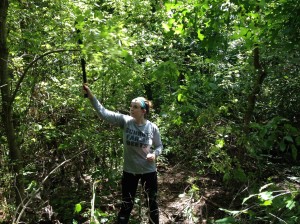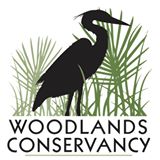The Woodlands Conservancy was established as a nonprofit over a decade ago in 2001 yet began in 1997 as a regional grassroots effort to preserve and plan for smart growth. Located in the English Turn peninsula of Belle Chasse, they control one of the last stands of bottomland hardwood forests in Louisiana.
The organization controls two separate plots of land totaling approximately 800 acres: The Woodlands Trail and Park Bird Sanctuary and The Delacroix Preserve. The organization was first started via a land trust with Plaquemines Parish, through which they created the 609-acre Woodlands Trail and Park. Unlike the Woodlands Trail land, which is essentially leased from the parish, The Woodlands Conservancy owns The Delacroix Preserve. Board member Lee Dupont and his wife gifted the 190 acres to the organization in 2013.
Their official mission statement is “to preserve and develop an ecosystem dedicated to creating daily public opportunities for recreation, ecotourism, and education in a natural and historic setting. The vision of Woodlands Conservancy is to be the regional model for the conservation of hardwood forests, and a leader in the advocacy and preservation of Louisiana’s coastal forest ecosystems.”
Despite its small size, the Woodlands Conservancy provides numerous invaluable services to the New Orleans area and beyond. The Woodlands Trail and Park provides hiking and equestrian trails that over 32,650 people have visited in the past 5 years. These natural paths are home to the NOLA Running Series’ annual Wild Pig Trail Run, which had over 300 participants in 2015. Local high school track and cross-country teams also utilize the trails for weekly runs. Other groups, ranging from boy scout troops to bird watchers, also take advantage of the vast recreational and educational opportunities available.
The Woodlands Conservancy also serves thousands of people who have never stepped foot on its land. By conserving and restoring these 800 acres of wetlands the organization protects one of the largest forests between open water and the city of New Orleans. With continual wetland loss, this land will be the most important hurricane buffer in the area, therefore benefiting countless people by minimizing storm surge impacts.
A fourteen-person board, including president Katie Rosenblum, vice president Lee Dupont, treasurer Gail Serauskas, and secretary Etheldreda Culpepper Smith run the Woodlands Conservancy. Currently, only executive director Katie Brasted staffs the office on a daily basis and performs much of the organization’s core activities. This year, the organization received a grant to hire a full-time field biologist to conduct work controlling invasive species in the Woodlands Park and Delacroix Preserve. Additionally, a group of core volunteers assist with bi-monthly bird banding studies.
As a non-profit organization, funding is derived from the donations of individuals, corporations, foundations, and government organizations. Over 40 corporations, including major businesses such as AT&T, Walmart, Chevron, and Entergy, have been key contributors. Alternative fundraising methods exemplify the creativity of the staff and community involvement that has been instrumental in the Conservancy’s success. For example, Mignon Faget designed a line of Palmetto shaped jewelry (a prominent plant in bottomland hardwood forests) that are available for purchase on the website, from which a portion of the proceeds go to the Woodlands Conservancy. From these sources, they have raised $1.6 million specifically for restoration work/programs, with more funds raised for various other projects.
As an environmental nonprofit, this organization is directly related to my field of study in Environmental Biology, including courses such as Wetlands and Estuarine Ecosystems, Theories and Methods of Ecology and Evolutionary Biology, and Conservation Biology. This past week, I was given the opportunity to assist Dr. Tom Huggins, director of the UCLA Herbarium, conduct fieldwork in Woodlands Park. The data derived from the vegetation surveys we performed will be included in the scientific paper he is currently working on. I gained hands on experience in field research methods, such as creating transects and point identification of various plants.
Executive director Katie Brasted summarized their significance as “The Woodlands Conservancy helps protect one of the most important forests still standing in southeast Louisiana.” This organization provides a public service by actively restoring and conserving this land, putting countless hours and funds towards defending this land and improving its health.

